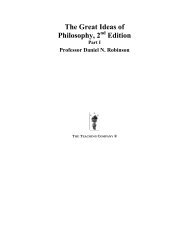Language Teaching Research
Language Teaching Research
Language Teaching Research
You also want an ePaper? Increase the reach of your titles
YUMPU automatically turns print PDFs into web optimized ePapers that Google loves.
48 Presenting figurative idioms with a touch of etymology<br />
domains. Our data suggest, for example, that the source domains of games<br />
and entertainment have generated a significantly higher proportion of informal<br />
figurative idioms than some other source domains, such as war and religion<br />
(chi square yields p .001). These findings lead us to speculate that<br />
experiential domains with predominantly ‘serious’ connotations (such as war<br />
and religion) may have been less likely to generate idioms that are commonly<br />
associated with ‘light-hearted’ conversation. Instead, idioms derived from less<br />
‘anxiety-provoking’ experiential domains (such as games) may generally<br />
have been felt more appropriate in informal contexts. To a degree, such usage<br />
restrictions may have been passed down from one generation to the next.<br />
If there is any truth to this speculation, then re-establishing the link between<br />
idioms and their origins might occasionally contain a cue for register awareness,<br />
after all. For example, associating Sticking one’s nose into something<br />
with the scene of a dog curiously poking its nose into things may hint at the<br />
informal nature of this expression. Likewise, associating Hook, line and<br />
sinker with the scene of a greedy fish gulping down much more than just the<br />
bait on the hook may be a cue to the informal nature of this idiom. One of the<br />
experiments described below was set up to explore this possibility.<br />
IV The pedagogical context: a computer-aided tool for<br />
learning idioms<br />
The experimental data we shall be discussing result from the implementation<br />
of an online tool that was developed by the authors for their students of<br />
modern languages in a college for higher education. The aim of the tool is for<br />
students to acquire knowledge of English figurative idioms (all derived from<br />
the experiential domains listed in section III above) over a four-year curriculum.<br />
The experiments reported below were carried out with the participation<br />
of second-year and third-year students. The idioms are presented to the students<br />
in series of 20 to 30 expressions at a time, but the same series of idioms<br />
are targeted in different types of exercises. Examples of the types of exercises<br />
are given in Appendix A.<br />
One exercise (called ‘identify the meaning’) is a multiple-choice task<br />
where the learner is asked to identify the correct definition of the figurative<br />
meaning of the expression. If the response is wrong, the meaning is explained<br />
on the screen as feedback.<br />
A second exercise (called ‘identify the source’) is a multiple-choice task<br />
where the learner is asked to identify the most likely source domain (e.g.<br />
‘war’) of the idiom. As feedback, a brief explanation of the origin of the<br />
expression appears on the screen. The identify-the-source exercise is meant to<br />
establish dual coding, as the ‘etymological’ feedback is likely to call up a<br />
mental image of a concrete scene which could possibly be stored in memory<br />
alongside the verbal form. Crucially, the etymological explanation does NOT<br />
explicitly connect the described origin of the expression with its present<br />
Downloaded from<br />
http://ltr.sagepub.com at Shanghai Jiaotong University on August 19, 2009














